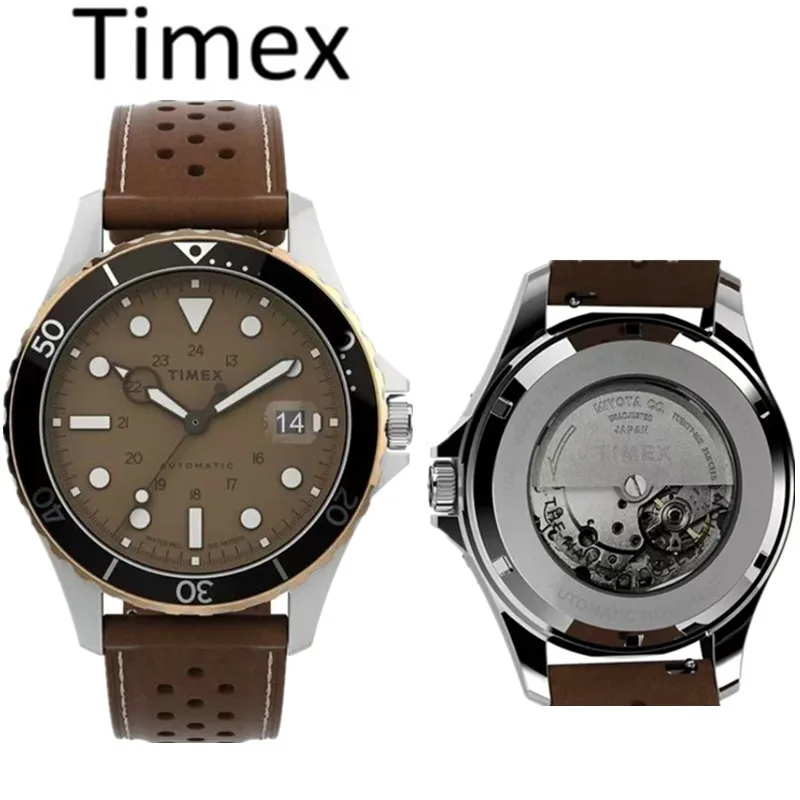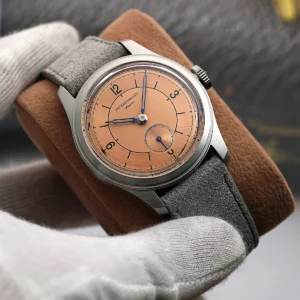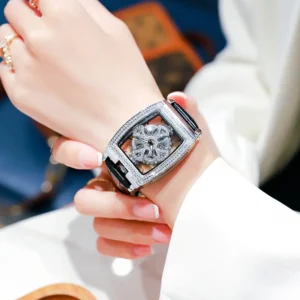Introduction: Understanding the Precision Behind Chronograph Watches
A chronograph watch represents one of horology’s most admired achievements—a timepiece that combines traditional timekeeping with precise stopwatch functionality. These mechanical marvels pack an extraordinary amount of engineering into a wearable form, with dozens of tiny components working in perfect harmony to measure elapsed time down to fractions of seconds.
The complexity behind a chronograph extends far beyond what meets the eye. Beneath the dial lies a miniature world of gears, levers, springs, and wheels—a three-dimensional puzzle of moving parts that showcases human ingenuity at its finest. This mechanical orchestra demonstrates the perfect marriage of form and function that watch enthusiasts have treasured for generations.
The significance of chronographs in horological history cannot be overstated. From their early development as specialized timing instruments to their current status as coveted mechanical wonders, these timepieces represent the pinnacle of watchmaking skill. Understanding the history-dive watch engineering provides valuable context for appreciating how these mechanical marvels evolved over time.
In this exploration, we’ll uncover the inner workings that make chronographs so fascinating—from their fundamental architecture to the precise operational sequences that bring them to life.
The Fundamental Architecture: Core Components of Chronograph Mechanisms
To appreciate the genius of chronograph design, one must first understand the building blocks that make these mechanisms work. At its core, every chronograph consists of two main systems: the regular timekeeping mechanism and the chronograph complication that sits either integrated within or modular atop the base movement.
The key components that form the foundation of any chronograph include:
- Base movement – The standard timekeeping mechanism that powers the watch
- Chronograph wheels – Gears dedicated to measuring elapsed time
- Control mechanism – Column wheel or cam system that coordinates functions
- Clutch – Engages and disengages the chronograph from the timekeeping train
- Reset mechanism – Returns the chronograph hands to zero position
- Recording displays – Central seconds and subdial indicators that show elapsed time
- Pushers – External buttons that operate the start, stop, and reset functions
The remarkable aspect of chronograph design is how these components must work together with perfect precision. When a user presses the pusher, a carefully orchestrated sequence begins—one that transforms a simple button press into the smooth sweep of a timing hand.
What makes chronographs particularly fascinating is how watchmakers balance mechanical complexity with reliability and usability. The intricate art science chronograph watchmaking demonstrates the perfect synthesis of engineering principles and artistic execution. For those curious to see these mechanisms in action, examining automatic chronograph watches reveals the diverse approaches manufacturers take to solving these mechanical puzzles.
The Control Center: Column Wheel vs. Cam-Actuated Mechanisms
At the heart of every chronograph lies a control system that orchestrates the start, stop, and reset functions. Two primary designs dominate this space: the elegant column wheel and the practical cam-actuated system. Each represents a different philosophy in chronograph engineering.
The column wheel—often considered the more prestigious option—resembles a miniature castle turret with vertical teeth (columns) arranged in a circle. When a pusher is depressed, a lever interacts with these columns, rotating the wheel precisely. This controlled movement directs other levers to engage the clutch, release brakes, or activate reset mechanisms with exceptional precision. The manufacturing complexity of column wheels requires significant expertise, as each tooth must be perfectly formed and positioned to ensure smooth operation.
In contrast, cam-actuated chronographs use a heart-shaped cam that pivots when pushers are activated. This cam controls a shuttle lever that moves back and forth, directing the chronograph’s functions. While less visually appealing than column wheels, cam systems offer several advantages: they’re more resistant to shock, easier to mass-produce, and generally more robust in daily use.
The difference between these systems becomes most apparent in the tactile experience they provide:
- Column wheel chronographs typically offer a smooth, buttery feel when pushers are pressed, with minimal resistance followed by a distinct click
- Cam-actuated systems often have a firmer, more mechanical feel with greater initial resistance
For enthusiasts interested in the technical aspects of different designs, understanding chronograph movement watches provides deeper insights into how these control systems influence a timepiece’s character, operation, and value.
Power Engagement: The Critical Role of Clutch Systems
The clutch mechanism represents a crucial engineering challenge in chronograph design—it must instantly connect and disconnect the chronograph wheels from the main timekeeping gear train without disrupting accuracy. Two primary clutch designs dominate modern chronographs: horizontal and vertical.
Horizontal clutches (also called lateral clutches) operate on a gear-meshing principle. When activated, an oscillating pinion slides sideways to connect with the chronograph wheel, transferring power from the fourth wheel of the main movement. This design dates back to early chronograph development and remains common in many watches today. However, it comes with inherent limitations—the teeth of gears must align properly during engagement, which can sometimes cause the chronograph hand to jump slightly upon activation.
Vertical clutches take a different approach by using friction between stacked discs to transfer power. When the chronograph is activated, these discs press together, immediately connecting the chronograph function to the timekeeping train. This design eliminates the jumping second hand issue and provides smoother operation. Additionally, vertical clutches can run continuously with less wear than horizontal systems, though they often increase the thickness of the movement.
The performance differences between these systems manifest in several ways:
- Chronograph hand behavior (smooth start vs. slight jump)
- Long-term wear patterns on components
- Impact on movement thickness and case design
- Overall smoothness of operation
Many watch enthusiasts appreciate seeing these different approaches in action. The power transmission systems found in manual wind watches share engineering principles with chronograph clutch designs, highlighting the interconnected nature of horological mechanisms.
The Operational Sequence: Start, Stop, and Reset Functions
The seemingly simple act of timing an event with a chronograph actually triggers a complex mechanical ballet inside the watch. Understanding this operational sequence reveals the true genius behind these mechanisms.
Start Function:
When the top pusher (typically at 2 o’clock) is pressed, it initiates a chain reaction. The pusher’s stem moves a lever that interacts with the control mechanism (column wheel or cam). This activates another lever that moves the clutch into position, connecting the chronograph wheels to the main timekeeping train. Simultaneously, any braking mechanism is released, allowing the chronograph seconds hand to begin rotating. All this happens in a fraction of a second with remarkable precision.
Stop Function:
Pressing the same pusher again reverses part of this sequence. The control mechanism pivots to a different position, triggering the disengagement of the clutch while simultaneously activating a brake that holds the chronograph hands precisely in place. This brake often consists of a small spring that gently presses against one of the chronograph wheels, preventing any further movement without disturbing the rest of the watch’s operation.
Reset Function:
The bottom pusher (usually at 4 o’clock) activates an entirely different set of components. When pressed, it triggers hammers that contact heart-shaped cams connected to each chronograph hand. These precisely shaped heart pieces ensure the hands return exactly to the zero position regardless of their starting position—a mechanical solution to what would otherwise be an alignment nightmare.
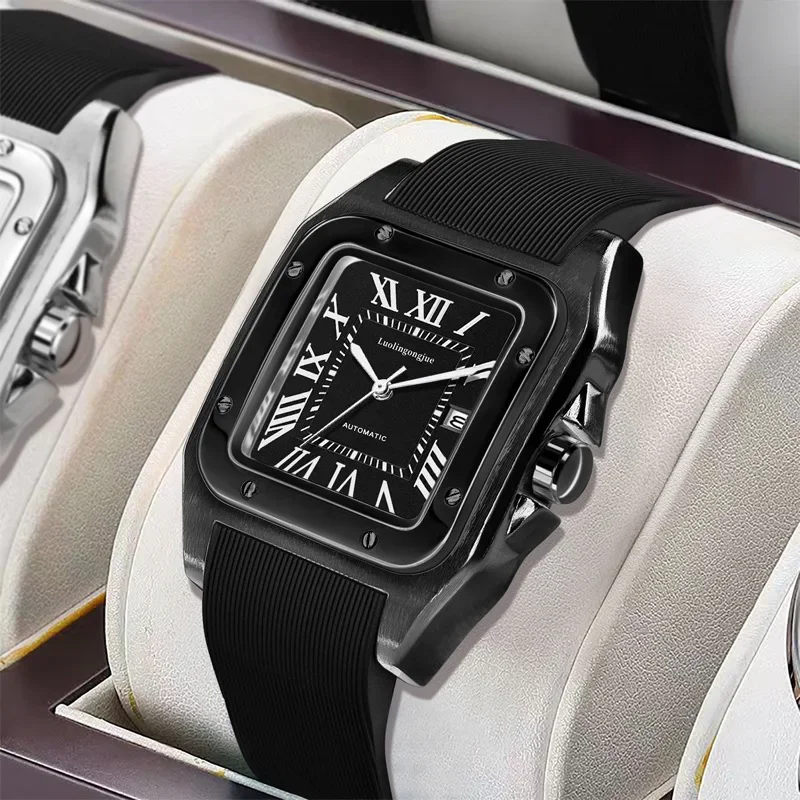
This operational sophistication builds upon decades of refinement in timing mechanisms. The evolution dive watch technology showcases similar progress in precision mechanical systems, with many innovations crossing between different types of specialized timepieces.
The Recording System: Chronograph Hands and Subdials
While the control and clutch mechanisms provide the foundation for chronograph operation, the recording system translates this mechanical action into readable time measurements through a series of hands and subdials.
The central chronograph seconds hand connects directly to the chronograph wheel, making one full rotation per minute in most designs. Its length and perfect balance are crucial for accurate readings and smooth movement. Many chronograph seconds hands include small counterweights hidden beneath the dial to ensure proper balance and reduce strain on the movement.
The minute counter subdial typically appears at either 3 o’clock or 9 o’clock and advances through a gear reduction mechanism. Most designs use a jumping system where the minute counter hand remains stationary until the central seconds hand completes a full 60-second rotation, then jumps forward one increment. This mechanism must be perfectly synchronized with the central seconds hand to ensure accurate readings.
For chronographs that measure hours, an additional gear reduction system powers the hour counter subdial. This further reduction requires extremely precise engineering to maintain accuracy over longer timing intervals.
Additional specialized recording features might include:
- Small running seconds (indicating the watch is operating properly)
- 1/5th or 1/10th second counters for more precise measurements
- Tachymeter scales for calculating speed over distance
- Telemeter scales for measuring distance based on sound propagation
The arrangement of these indicators varies widely among chronograph pilot watches, where legibility and specific functionality often dictate dial layout. The subdial configuration not only serves practical purposes but also contributes significantly to each chronograph’s distinctive visual identity.
Advanced Complications: Enhanced Chronograph Functionality
While standard chronographs already represent impressive feats of engineering, advanced variations push mechanical complexity to even greater heights. These enhanced chronograph complications showcase extraordinary ingenuity in solving specialized timing challenges.
Flyback Chronograph:
This sophisticated mechanism allows the user to reset and restart the chronograph with a single pusher action—without first stopping the timing sequence. Traditional chronographs require three steps: stop, reset, start. Flyback mechanisms incorporate specially designed levers that can bypass the stopping phase while simultaneously resetting and restarting the timing hands. Originally developed for pilots who needed to time consecutive flight legs quickly, flyback chronographs showcase an elegant solution to a practical timing problem.
Split-Seconds (Rattrapante) Chronograph:
Perhaps the most complex chronograph variant, the rattrapante features two superimposed seconds hands that can time two events simultaneously. When activated, one hand “splits” away while the other continues running. This requires an additional column wheel, special clutch system, and complex heart-piece arrangement to maintain accuracy and proper hand alignment. The power requirements for split-seconds mechanisms are substantially higher than standard chronographs, requiring reinforced mainsprings or careful power management.
Monopusher Chronograph:
Representing chronograph design in its purest form, monopushers control all functions (start, stop, reset) through a single button, cycling sequentially through operations with each press. This simplified external interface actually requires more complex internal mechanisms, as the control system must track its position in the operational sequence.
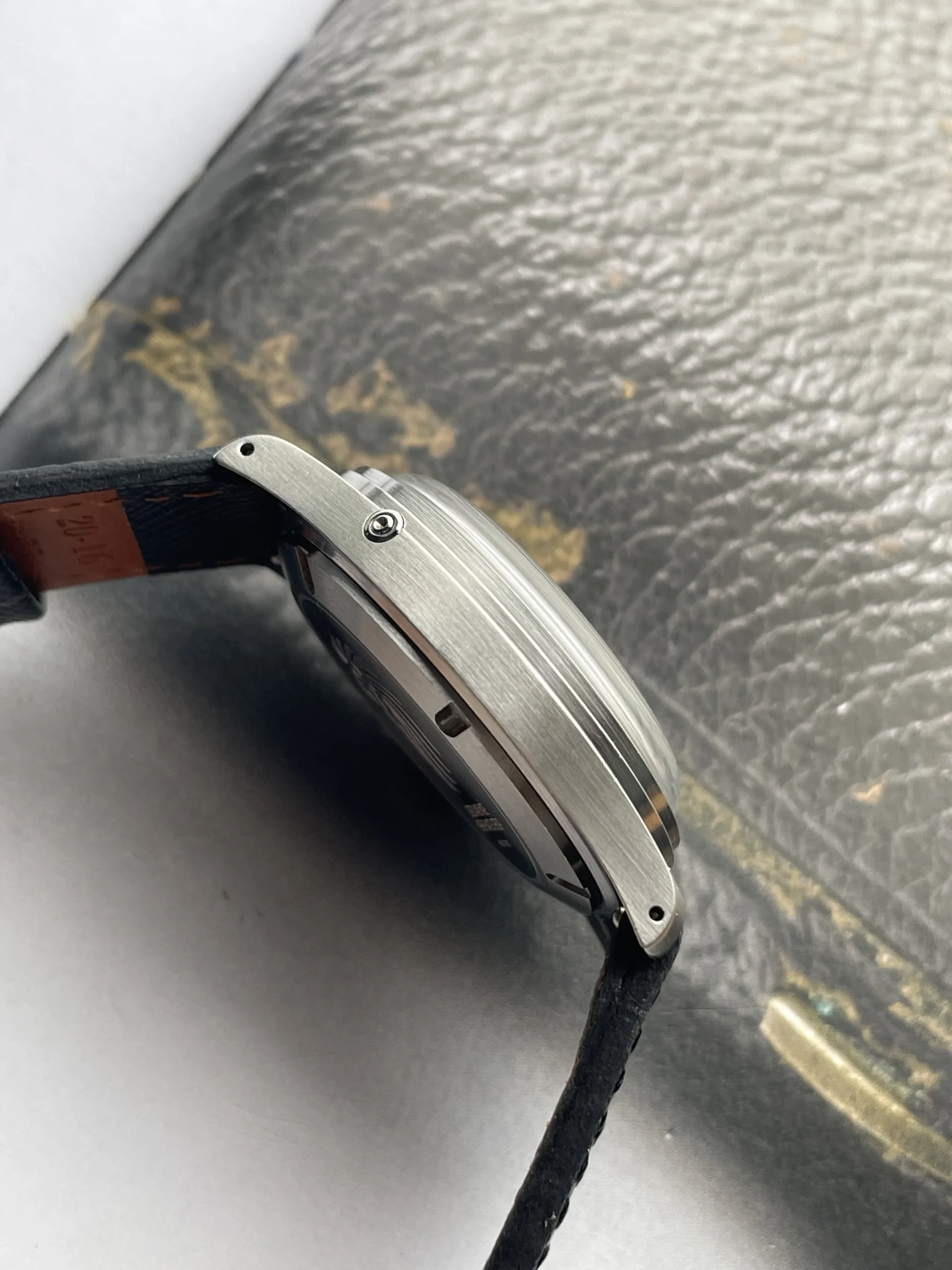
These advanced mechanisms represent the culmination of centuries of chronograph development. The enduring legacy chronograph complications continues to fascinate collectors and enthusiasts alike. For those interested in mechanical complexity beyond timing functions, perpetual calendar automatic watches represent another pinnacle of watchmaking ingenuity.
Engineering Challenges: Precision, Power, and Space Constraints
Creating a functioning chronograph requires watchmakers to overcome significant engineering hurdles that don’t exist in standard timepieces. These challenges explain why chronographs represent a higher tier of watchmaking achievement.
Power management presents perhaps the most fundamental challenge. When a chronograph is activated, the movement must suddenly drive additional hands and wheels while maintaining accuracy. This increased load can cause amplitude reduction in the balance wheel—potentially affecting timekeeping precision. Watchmakers address this through several approaches: stronger mainsprings, more efficient gear trains, or in some cases, separate power sources for the chronograph mechanism.
Spatial constraints pose equally daunting challenges. Fitting dozens of additional components into a case that remains wearable requires extraordinary design ingenuity. Modern chronograph movements often represent masterclasses in three-dimensional space utilization, with components stacked and arranged in ways that maximize efficiency while minimizing thickness. The height versus diameter trade-off becomes particularly critical in chronograph design.
Precision requirements further complicate matters. Components must be manufactured to extremely tight tolerances—often measured in hundredths of a millimeter. Backlash (unwanted movement between gears) must be minimized through careful design and adjustment. Hand alignment requires particular attention, as any deviation becomes immediately visible when the chronograph is reset.
For collectors and enthusiasts seeking to evaluate these technical aspects, the definitive chronograph feature guide collectors provides valuable criteria for assessing how well a particular watch addresses these engineering challenges.
Classic Automatic Dress Watches, Day Date Automatic Watches, Perpetual Calendar Automatic Watches
Price range: $540.60 through $574.60 Select options This product has multiple variants. The options may be chosen on the product pageAutomatic Chronograph Watches, Chronograph Pilot Watches
Price range: $233.36 through $237.58 Select options This product has multiple variants. The options may be chosen on the product pageAutomatic Chronograph Watches, Classic Style Dive Watches
$3,053.06 Select options This product has multiple variants. The options may be chosen on the product pageAutomatic Skeleton Watches, Open Heart Automatic Watches
$98.36 Select options This product has multiple variants. The options may be chosen on the product pageClassic Manual Wind Watches, Manual Wind Dress Watches
Price range: $425.50 through $462.50 Select options This product has multiple variants. The options may be chosen on the product page- $104.12 Select options This product has multiple variants. The options may be chosen on the product page
Movement Finishing and Decoration: Where Function Meets Art
Beyond their mechanical ingenuity, fine chronographs also showcase extraordinary artisanship through movement finishing and decoration. These aesthetic elements transform functional components into visual masterpieces visible through exhibition casebacks.
Column wheels in premium chronographs often receive special attention, with their upper surfaces polished to a mirror finish that catches light beautifully. Levers and bridges may feature beveled and polished edges (anglage) that demonstrate the watchmaker’s skill and attention to detail. Traditional decorative techniques like Côtes de Genève (Geneva stripes), perlage (circular graining), and blued screws further enhance the visual appeal.
Interestingly, many decorative elements serve functional purposes beyond aesthetics. Perlage helps trap dust particles that might otherwise interfere with movement operation. Polished components reduce friction and improve longevity. Blued screws resist corrosion better than untreated alternatives. This marriage of form and function exemplifies the philosophy behind fine watchmaking.

The visual drama of seeing these components in motion has fueled growing interest in open heart automatic watches, where the beating mechanical heart becomes part of the aesthetic experience. Sharp Aspect’s collection showcases this blend of technical execution and artistic expression that defines exceptional watchmaking.
Maintaining Your Chronograph: Service Considerations
The complexity that makes chronographs so fascinating also creates special maintenance requirements. Understanding these needs helps ensure your mechanical marvel provides decades of reliable service.
Chronograph movements typically require servicing at shorter intervals than standard watches—usually every 3-5 years rather than 5-7 years. This accelerated schedule stems from their additional moving parts and the greater stress placed on components during chronograph operation. The clutch mechanism, in particular, represents a common wear point that benefits from regular professional attention.
To maximize your chronograph’s longevity, consider these best practices:
- Avoid operating the chronograph continuously for extended periods, as this increases wear on the clutch and consumes more power
- Use the reset function only when the chronograph is stopped (unless it’s a flyback model specifically designed for reset-while-running)
- Refrain from operating pushers underwater, even on water-resistant models, unless specifically rated for underwater chronograph operation
- Note any changes in pusher feel, hand movement, or reset alignment—these often indicate service needs
Understanding these maintenance considerations complements knowing how long automatic watches last, helping collectors maximize the lifespan of their prized timepieces.
Conclusion: The Enduring Appeal of Mechanical Chronographs
The mechanical chronograph stands as testament to human ingenuity—a perfect symphony of engineering, precision, and artistry contained within a wristwatch. What makes these timepieces truly remarkable is not just their ability to measure elapsed time, but the mechanical poetry through which they accomplish this task.
In our digital age, where electronic timing is ubiquitous and infinitely more practical, the continued fascination with mechanical chronographs speaks to something deeper than mere functionality. These watches represent the triumph of human creativity over constraints, the beauty of mechanical solutions, and the tangible connection to generations of watchmaking tradition.
The chronograph’s enduring appeal lies in this perfect intersection of form and function—a mechanical marvel that combines artistic expression with practical utility, all within the confines of a wristwatch. This harmony explains why, even centuries after their invention, mechanical chronographs continue to capture the imagination of watch enthusiasts worldwide.

